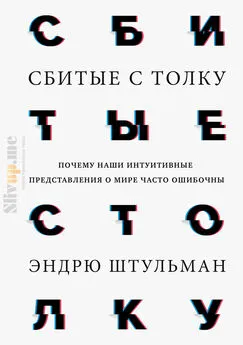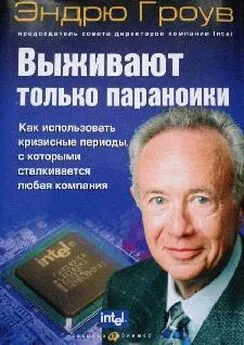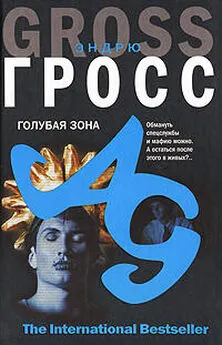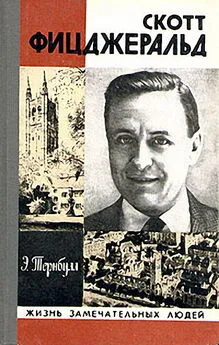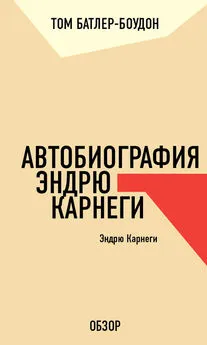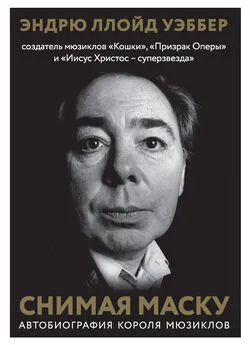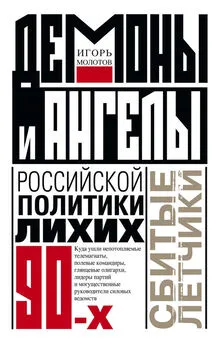Эндрю Штульман - Сбитые с толку
- Название:Сбитые с толку
- Автор:
- Жанр:
- Издательство:Манн, Иванов и Фербер
- Год:2020
- Город:Москва
- ISBN:9785001177616
- Рейтинг:
- Избранное:Добавить в избранное
-
Отзывы:
-
Ваша оценка:
Эндрю Штульман - Сбитые с толку краткое содержание
Сбитые с толку - читать онлайн бесплатно ознакомительный отрывок
Интервал:
Закладка:
Mendes, N., Rakoczy, H., and Call, J. (2008). Ape metaphysics: Object individuation without language. Cognition, 106, 730–749.
Mermelstein, E., and Meyer, E. (1969). Conservation training techniques and their effects on different populations. Child Development, 40, 471–490.
Meyer, M., Leslie, S. J., Gelman, S. A., and Stilwell, S. M. (2013). Essentialist beliefs about bodily transplants in the United States and India. Cognitive Science, 37, 668–710.
Middleton, W. E. K. (1971). The experimenters: A study of the Accademia del Cimento. Baltimore: Johns Hopkins Press.
Miller, C. S., Lehman, J. F., and Koedinger, K. R. (1999). Goals and learning in microworlds. Cognitive Science, 23, 305–336.
Miller, J. D., Scott, E. C., and Okamoto, S. (2006). Public acceptance of evolution. Science, 313, 765–766.
Miller, S. A. (1973). Contradiction, surprise, and cognitive change: The effects of disconfirmation of belief on conservers and nonconservers. Journal of Experimental Child Psychology, 15, 47–62.
Millman, A. B., and Smith, C. L. (1997). Darwin’s use of analogical reasoning in theory construction. Metaphor and Symbol, 12, 159–187.
Mills, C. M., and Keil, F. C. (2004). Knowing the limits of one’s understanding: The development of an awareness of an illusion of explanatory depth. Journal of Experimental Child Psychology, 87, 1–32.
Minstrell, J. (1982). Explaining the «at rest» condition of an object. Physics Teacher, 20 , 10–14.
Miton, H., Claidiere, N., and Mercier, H. (2015). Universal cognitive mechanisms explain the cultural success of bloodletting. Evolution and Human Behavior, 36, 303–312.
Mora, C., Tittensor, D. P., Adl, S., Simpson, A. G., and Worm, B. (2011). How many species are there on Earth and in the ocean? PLoS Biology, 9, e1001127.
Morris, S. C., Taplin, J. E., and Gelman, S. A. (2000). Vitalism in naive biological thinking. Developmental Psychology, 36, 582–595.
Moss, J., and Case, R. (1999). Developing children’s understanding of the rational numbers: A new model and an experimental curriculum. Journal for Research in Mathematics Education, 30, 122–147.
Mungai, E. A., Behravesh, C. B., and Gould, L. H. (2015). Increased outbreaks associated with nonpasteurized milk, United States, 2007–2012. Emerging Infectious Diseases, 21, 119–122.
Murphy, G. L., and Medin, D. L. (1985). The role of theories in conceptual coherence. Psychological Review, 92, 289–316.
Myers, T. A., Maibach, E., Peters, E., and Leiserowitz, A. (2015). Simple messages help set the record straight about scientific agreement on human-caused climate change: The results of two experiments. PloS One, 10, e0120985.
Nakhleh, M. B., Samarapungavan, A., and Saglam, Y. (2005). Middle school students’ beliefs about matter. Journal of Research in Science Teaching, 42, 581–612.
National Academies of Sciences, Engineering, and Medicine (2016a). Genetically engineered crops: Experiences and prospects. Washington, DC: National Academies Press.
National Academies of Sciences, Engineering and Medicine (2016b). Science literacy: Concepts, contexts, and consequences . Washington, DC: National Academies Press.
National Conference of State Legislatures (2016, Aug. 23). States with religious and philosophical exemptions from school immunization requirements. Retrieved from www.ncsl.org/research/health/school-immunization-exemption-state-laws.aspx.
National Science Board (2014). Science and engineering indicators. Arlington, VA: National Science Foundation.
National Science Teachers Association (2013). Next generation science standards. Washington, DC: National Academies Press.
Needham, A., and Baillargeon, R. (1993). Intuitions about support in 4,5-month-old infants. Cognition, 47, 121–148.
Nersessian, N. J. (1989). Conceptual change in science and in science education. Synthese, 80, 163–183.
Neurath, O. (1973). Empiricism and sociology. Dordrecht: Holland: D. Reidel Publishing Company.
Newport, F. (2010). Four in 10 Americans believe in strict creationism . Gallup Organization.
Newton, I. (1687/1999). The principia: mathematical principles of natural philosophy. Berkeley: University of California Press. Издание на русском языке: Ньютон, И. Математические начала натуральной философии / И. Ньютон. М.: Наука, 1989.
Nguyen, S. P., McCullough, M. B., and Noble, A. (2011). A theory-based approach to teaching young children about health: A recipe for understanding. Journal of Educational Psychology, 103, 594–606.
Nguyen, S. P, and Rosengren, K. S. (2004). Causal reasoning about illness: A comparison between European-and Vietnamese-American children. Journal of Cognition and Culture, 4, 51–78.
Nobes, G., Martin, A. E., and Panagiotaki, G. (2005). The development of scientific knowledge of the earth. British Journal of Developmental Psychology, 23, 47–64.
Novick, L. R., and Catley, K. M. (2007). Understanding phylogenies in biology: The influence of a Gestalt perceptual principle. Journal of Experimental Psychology: Applied, 13, 197–223.
Novick, S., and Nussbaum, J. (1981). Pupils’ understanding of the particulate nature of matter: A cross-age study. Science Education, 65, 187–196.
Nussbaum, J., and Novak, J. D. (1976). An assessment of children’s concepts of the earth utilizing structured interviews. Science Education, 60, 535–550.
O’Connor, A. (2008, November 10). The claim: Tongue is mapped into four areas of taste. New York Times, D6.
Obama, B. (2015). Climate change can no longer be ignored. Office of the Press Secretary. Retrieved from https://obamawhitehouse.archives.gov/the-press-office/2015/04/18/weekly-address-climate-change-can-no-longer-be-ignored.
Olsen, S. J., MacKinnon, L. C., Goulding, J. S., Bean, N. H., and Slutsker, L. (2000). Surveillance for foodborne disease outbreaks: United States, 1993–1997. Morbidity and Mortality Weekly Report, 49, 1–62.
Onion (2010). Scientists successfully teach gorilla it will die someday. https://www.theonion.com/scientists-successfully-teach-gorilla-it-will-die-somed-1819594897.
Onion (2015). Natural selection kills 38 quadrillion organisms in bloodiest day yet . https://www.theonion.com/natural-selection-kills-38-quadrillion-organisms-in-blo-1819577415.
Opfer, J. E., Nehm, R. H., and Ha, M. (2012). Cognitive foundations for science assessment design: Knowing what students know about evolution. Journal of Research in Science Teaching, 49 , 744–777.
Opfer, J. E., and Siegler, R. S. (2004). Revisiting preschoolers’ living things concept: A microgenetic analysis of conceptual change in basic biology. Cognitive Psychology, 49, 301–332.
Orenstein, W. A., Papania, M. J., and Wharton, M. E. (2004). Measles elimination in the United States. Journal of Infectious Diseases, 189, 1–3.
Oreskes, N. (1999). The rejection of continental drift: Theory and method in American earth science. Oxford, UK: Oxford University Press.
Orwig, J. (2015). The physics of Mario World show the game has a fundamental flaw. Business Insider. Retrieved from www.businessinsider.com/mario-brothers-physics-gravity-2015-2.
Osthaus, B., Slater, A. M., and Lea, S. E. (2003). Can dogs defy gravity? A comparison with the human infant and a non-human primate. Developmental Science, 6, 489–497.
Ozsoy, S. (2012). Is the earth flat or round? Primary school children’s understandings of the planet earth. International Electronic Journal of Elementary Education, 4, 407–415.
Palmer, D. H., and Flanagan, R. B. (1997). Readiness to change the conception that «motion-implies-force»: A comparison of 12-year-old and 16-year-old students. Science Education, 81, 317–331.
Panagiotaki, G., Nobes, G., Ashraf, A., and Aubby, H. (2015). British and Pakistani children’s understanding of death: Cultural and developmental influences. British Journal of Developmental Psychology, 33, 31–44.
Panagiotaki, G., Nobes, G., and Banerjee, R. (2006). Children’s representations of the earth: A methodological comparison. British Journal of Developmental Psychology, 24, 353–372.
Pemberton, S. G., Gingras, M. K., and MacEachern, J. A. (2007). Edward Hitchcock and Roland Bird: Two early titans of vertebrate ichnology in North America. In W. Miller (ed.). Trace fossils: Concepts, problems, prospects, 30–49. Amsterdam: Elsevier.
Pennisi, E. (2003). Modernizing the tree of life. Science, 300, 1692–1697.
Pew Research Center (2009). Public opinion on religion and science in the United States. Washington, DC: Pew Research Center.
Pew Research Center (2015). Public and scientists’ views on science and society . Washington, DC: Pew Research Center.
Phillips, B. C., Novick, L. R., Catley, K. M., and Funk, D. J. (2012). Teaching tree thinking to college students: It’s not as easy as you think. Evolution: Education and Outreach, 5, 595–602.
Piaget, J. (1929/2007). The child’s conception of the world. New York: Routledge. Издание на русском языке: Пиаже, Ж. Речь и мышление ребенка / Ж. Пиаже. М.: Педагогика-Пресс, 1994.
Piaget, J. (1941/2001). The child’s conception of number. New York: Routledge. Издание на русском языке: Пиаже, Ж. Генезис числа у ребенка // Пиаже Ж. Избранные психологические труды. М.: Просвещение, 1969 и 1994.
Piaget, J. (1937/1954). The construction of reality in the child . New York: Basic Books.
Poling, D. A., and Evans, E. M. (2004). Religious belief, scientific expertise, and folk ecology. Journal of Cognition and Culture, 4, 485–524.
Poling, D. A., and Hupp, J. M. (2008). Death sentences: A content analysis of children’s death literature. Journal of Genetic Psychology, 169, 165–176.
Potter, M. E., Kaufmann, A. F., Blake, P A., and Feldman, R. A. (1984). Unpasteurized milk: The hazards of a health fetish. Journal of the American Medical Association, 252, 2048–2052.
Potvin, P, Masson, S., Lafortune, S., and Cyr, G. (2015). Persistence of the intuitive conception that heavier objects sink more: A reaction time study with different levels of interference. International Journal of Science and Mathematics Education, 13, 21–43.
Priest, S. H., Bonfadelli, H., and Rusanen, M. (2003). The «trust gap» hypothesis: Predicting support for biotechnology across national cultures as a function of trust in actors. Risk Analysis, 23, 751–766.
Public Policy Polling (2013). Democrats and Republicans differ on conspiracy theory beliefs. Raleigh, NC: Public Policy Polling.
Punter, P, Ochando-Pardo, M., and Garcia, J. (2011). Spanish secondary school students’ notions on the causes and consequences of climate change. International Journal of Science Education, 33 , 447–464.
Quoidbach, J., Gilbert, D. T., and Wilson, T. D. (2013). The end of history illusion. Science, 339, 96–98.
Raman, L., and Gelman, S. A. (2004). A cross-cultural developmental analysis of children’s and adults’ understanding of illness in South Asia (India) and the United States. Journal of Cognition and Culture, 4, 293–317.
Читать дальшеИнтервал:
Закладка:
